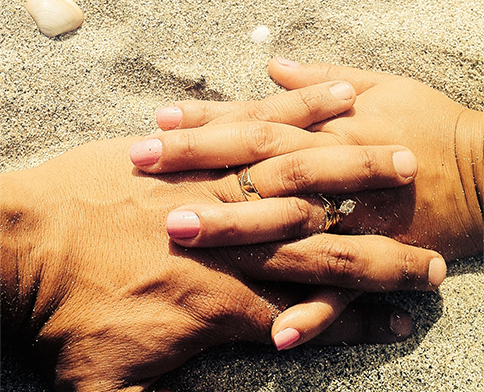This week’s post is a public service announcement to get everyone to cease and desist leaning on one leg (i.e. hanging on one hip) when standing. Many of us do it without even thinking, shifting our body weight over onto one leg and just hanging out there. But in the effort to use less effort, we are reinforcing awful movement patterns and putting the entire kinetic chain in a damaging position. If you or your athletes have medial knee pain, hip or back dysfunction a good place to start may be how they’re standing. We also definitely see this in our athletic new mother’s too, who hold the baby on their hip while leaning on one leg (hello pelvic floor dysfunction).
Here’s the deal:
Our musculoskeletal system is set-up to distribute the weight of our body plus gravity in an optimal way. However, when leaning onto one leg that weight is redistributed such that the pelvis drops toward that leg (see image below). The result is ugly:
Our musculoskeletal system is set-up to distribute the weight of our body plus gravity in an optimal way. However, when leaning onto one leg that weight is redistributed such that the pelvis drops toward that leg (see image below). The result is ugly:
- The glutes shut off, and active control of the hip is lost. By rendering these muscles (which control the motion of the pelvis on the femur in the closed chain) useless, we are relying on the hip ligaments/capsule and bone-bone contact for support. This glute-inhibited position also may inhibit control of the pelvic floor causing a major women’s health issue, particularly in new mothers.
- The redistribution of weight from the pelvic drop causes increased loading to the medial (inside) compartment of the knee – referred to as the external knee adduction moment – a huge cause of knee joint osteoarthritis. No wonder your knees hurt after standing for awhile. It also increases the lateral pull on the patella, potentially altering patellofemoral loading (anterior knee pain).
- The lumbar spine has to compensate in order to keep the trunk upright, which has consequences. The spine is flexed laterally and spinal control is altered. We are also likely closing down the intervertebral spaces where nerve roots exit as well as firing up the lateral stabilizers of the spine (quadratus lumborum comes to mind).
But the real problem is that we are reinforcing this faulty pattern daily and even hourly often out of habit. This contralateral pelvic drop is a pathognomic we look for often as physios, yet our athletes are reinforcing it even between reps while training! How much will you benefit from motor control or strength training – often directly targeted at this hip/pelvic control issue – if you lean on one hip while drinking water between sets? Yet this happens all the time. In order for our training and performance gains to stick there has to be carryover to everyday movements. You move how you move. Chances are if you are standing with this pattern you will walk and run with this same pattern.
Here’s the fix (it’s an easy one): stop leaning on one leg! You should have active glutes while standing (you need to be squeezing them and your abs while upright). No more passive leaning, hanging on your hip joint. If necessary, stand with a wider base of support, march in place, or put one foot on stool for a bit to unload your spine during prolonged standing. Penalize yourself or your athletes with 10 burpees for every minute of leaning on one leg.
Here ends this Public Service Announcement.
– Seth
Here ends this Public Service Announcement.
– Seth






Can I be experiencing pain in the Pelvic area due to applying pressure on one leg when leaning?